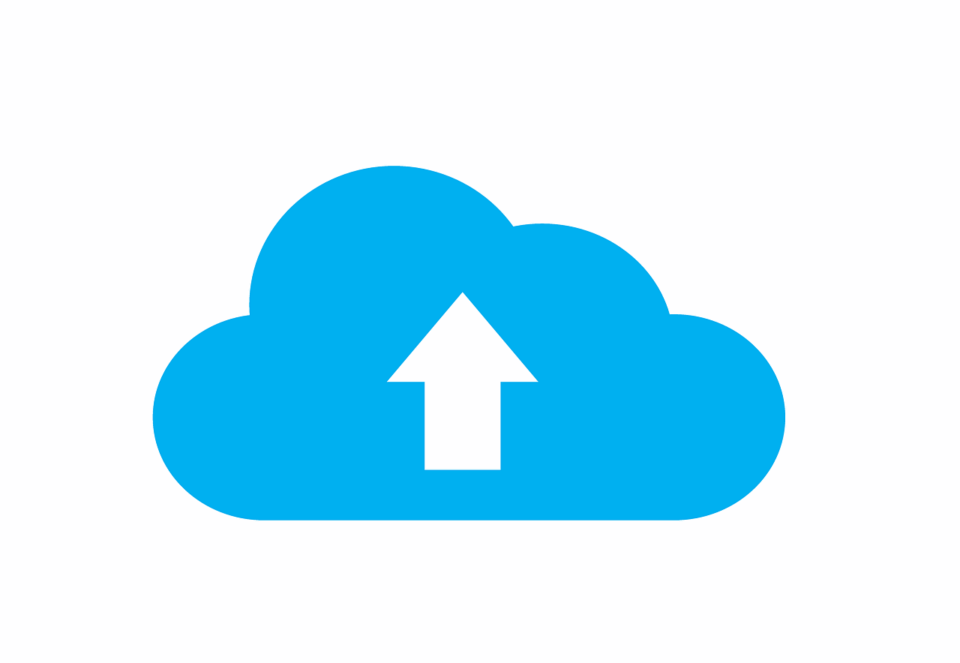Table Of Contents:
- Comparing Cost Efficiency: Cloud Faxing vs. Traditional Fax Server Systems Explained
- Understanding the Cost Efficiency of Cloud Faxing
- Analyzing the Expenses Associated With Traditional Fax Server Systems
- Cost Comparison Between Cloud Faxing and Traditional Fax Servers
- Case Studies Highlighting Cost Efficiency in Different Industries
- Assessing ROI From Cloud-Based Fax Solutions
- Making the Transition: What Businesses Need to Consider
- Conclusion
Comparing Cost Efficiency: Cloud Faxing vs. Traditional Fax Server Systems Explained
Is your business struggling with the costs associated with traditional fax server systems? The shift to cloud faxing services can enhance productivity while reducing expenses. This article explores the cost efficiency of cloud faxing compared to traditional systems, analyzes the expenses involved in each, and shares case studies that demonstrate the financial benefits across different industries. Readers will gain insights into how transitioning to cloud faxing can solve financial pain points and streamline IT infrastructure, ultimately improving customer satisfaction through faster transmission and reliability.
Understanding the Cost Efficiency of Cloud Faxing

Cloud faxing offers significant economic benefits by reducing costs associated with traditional fax server systems. It provides automation, convenience, and environmentally friendly options that appeal to modern businesses. Key cost factors, such as reliance on plain old telephone service and maintenance expenses, will be explored to highlight how cloud faxing simplifies operations while enhancing overall cost efficiency.
Defining Cloud Faxing and Its Economic Benefits
Cloud faxing leverages transmission control protocol to enable fast, reliable, and secure document delivery over the internet. This method eliminates the need for traditional fax machines that require physical supplies such as toner and paper, thus reducing both operational costs and environmental impact. By using cloud services, businesses not only streamline their communication but also promote eco-friendly practices by cutting down on carbon footprints.
The integration of voice over IP technology in cloud faxing further enhances its economic benefits. IP-based faxing reduces long-distance calling costs that often accompany conventional fax systems. Organizations can benefit significantly by consolidating their communication technologies, thus achieving greater efficiency and regulatory compliance without the complexities associated with older systems.
In addition to lowering the costs of materials and services, cloud faxing provides high-level security measures that protect sensitive information. With encrypted transmissions and secure storage, businesses can meet strict regulatory compliance requirements while avoiding potential fines linked to data breaches. This high level of security, combined with cost savings and improved efficiency, positions cloud faxing as an effective alternative to traditional fax server systems.
Identifying Key Cost Factors in Cloud Faxing
One significant cost factor in cloud faxing is the reduced reliance on physical materials such as ink and paper associated with traditional fax machines. Moving to a digital platform allows businesses to send and receive digital faxes directly through mobile apps, streamlining the process and eliminating the need for costly supplies. This shift not only minimizes expenses but also enhances overall operational efficiency.
Accessibility is another key element in identifying cost factors. Cloud faxing enables employees to access documents from anywhere, reducing the likelihood of downtime caused by hardware failures or maintenance issues common with traditional systems. By ensuring constant availability, organizations can maintain productivity and avoid the financial pitfalls associated with lost time.
Moreover, the secure and efficient nature of cloud faxing helps businesses avoid expenses linked to compliance violations, which are more prevalent in traditional fax operations. With encrypted transmissions and straightforward record-keeping, cloud solutions reduce the risks associated with data breaches. This proactive approach to security can lead to substantial cost savings, further establishing cloud faxing as a valuable alternative in the cost efficiency comparison.
Cloud faxing proves its worth in saving money, but it’s essential to look at traditional methods. The costs tied to fax server systems paint a different picture that begs for careful examination.
Analyzing the Expenses Associated With Traditional Fax Server Systems

Traditional fax server systems involve significant initial investment and installation costs, requiring physical infrastructure such as data centers and dedicated telephone lines. Ongoing maintenance and operational expenses can further strain budgets, alongside the hidden costs of energy consumption and potential downtime. The following sections will delve into these expenses to illustrate the challenges organizations face compared to the streamlined approach of virtual fax services.
Initial Investment and Installation Costs
Initial investment costs for traditional fax server systems can be substantial, as organizations must purchase physical equipment such as fax machines, dedicated phone lines, and fax servers. Additionally, businesses may need to allocate budget for specialized setup and installation services. This financial burden can hinder cash flow and limit resources for other critical areas, especially for smaller healthcare practices where budget constraints are more pronounced.
Beyond hardware, there are ongoing installation costs associated with maintaining traditional systems, which include regular servicing, supply replenishment, and potential upgrades. These maintenance needs demand both time and money, detracting from an organization’s operational efficiency. In contrast, switching to cloud faxing significantly reduces these expenditures while also enhancing usability, as electronic documents can be easily shared and accessed with just an internet connection.
The high costs of initial setup with traditional systems pose risks, especially when considering technological advances in digital data management. As healthcare continues to evolve toward electronic health records, organizations must reconsider the cost-effectiveness of maintaining outdated faxing methods. Cloud faxing presents a more adaptive solution, promoting seamless communication without the financial strain tied to older infrastructures.
Ongoing Maintenance and Operational Expenses
The ongoing maintenance expenses for traditional fax server systems significantly impact operational budgets. Organizations must routinely service hardware, manage supply stock like ink and paper, and deal with technical issues that arise from hardware dependency. These involvements not only incur costs but can also hinder overall workflow efficiency, leading to delays in critical communications.
Additionally, maintaining a traditional fax environment often necessitates substantial investment in a local area network (LAN) infrastructure. Organizations may face hidden costs associated with energy consumption from running outdated machines alongside the increased risk of downtime from hardware failures. This necessity for ongoing infrastructure support constrains financial resources that could otherwise be directed toward digital transformation initiatives.
In contrast, cloud faxing solutions streamline document management systems and reduce the burden of ongoing maintenance. By transitioning to a cloud-based system, businesses can minimize or eliminate maintenance costs, allowing them to focus on enhancing efficiency within their operations. This shift not only protects against unexpected expenditures but also supports the move toward more agile and effective communication practices in today’s fast-paced business environment.
Hidden Costs of Traditional Fax Usage
Traditional fax usage often incurs hidden costs that can significantly impact overall operational budgets. For instance, maintaining paper trails for secure transmission requires ongoing investment in ink, paper, and storage solutions. Employees may also face a steep learning curve when dealing with refined compliance regulations, like the Health Insurance Portability and Accountability Act (HIPAA), adding to the financial strain as they must become adept at managing these requirements while still using outdated systems.
Moreover, traditional fax machines rely heavily on analog signals which can affect the quality of document transmission, leading to potential re-sending of faxes that are poorly received. This not only causes delays but also increases operational costs since businesses may need to allocate additional resources to track and resend documents. The inefficiencies created by reliance on outdated technology can disrupt workflow within an organization’s ecosystem, resulting in lost productivity time and increased frustration among staff.
Another hidden cost associated with traditional fax systems is the inevitable maintenance and repair expenses that arise from hardware dependence. As machines age, they require more frequent repairs, which can be costly and unpredictable. Such maintenance tasks divert attention from core business functions, ultimately affecting service delivery and customer satisfaction, as businesses struggle to meet demands while managing the burdens of an inefficient faxing process.
The costs of traditional fax servers weigh heavily on many businesses. In the next part, a sharp comparison will reveal how cloud faxing can lighten that burden.
Cost Comparison Between Cloud Faxing and Traditional Fax Servers

The comparison of cloud faxing and traditional fax server systems involves several key financial aspects. This section will detail the breakdown of licensing and subscription fees associated with software as a service models and the long-term cost savings offered by digital fax solutions. Furthermore, it will explore scalability and its cost implications, particularly relevant for health care organizations seeking efficient communication options within their computer network.
By evaluating these factors, organizations can better understand the financial advantages of adopting a user interface that prioritizes efficiency and adaptability, ultimately supporting their operational goals.
Breakdown of Licensing and Subscription Fees
Licensing and subscription fees for cloud faxing often operate on a pay-as-you-go model, allowing businesses to scale their usage based on demand. This flexibility in cost is advantageous for organizations that experience fluctuating fax volumes, particularly in sectors like healthcare that rely on secure document delivery. By utilizing an internet fax solution, businesses can optimize their telecommunications expenses while ensuring they only pay for the services they need.
In contrast, traditional fax server systems typically require hefty upfront investments in hardware and software licenses, alongside ongoing costs for maintenance and upgrades. These expenses can strain budgets, especially for smaller enterprises. By shifting to a cloud-based approach, organizations can avoid these significant initial costs and instead allocate resources towards enhancing their core operational functions.
Moreover, with the integration of VoIP and session initiation protocol technologies, cloud faxing simplifies communications and reduces overall expenditures related to telephony services. This modernized approach to faxing ensures that businesses remain compliant with industry standards, while also minimizing hidden costs associated with outdated server maintenance or operational disruptions. Such advancements make cloud faxing an appealing option for organizations seeking efficient communication solutions while managing their financial resources effectively.
Evaluating Long-Term Cost Savings
Evaluating long-term cost savings in cloud faxing versus traditional fax server systems reveals significant advantages. By adopting a cloud fax service, organizations can eliminate the expenses associated with hardware and related maintenance, which can escalate over time. This shift not only reduces capital investment but also leads to lower ongoing operational costs, thus ensuring more resources can be allocated to other critical functions, enhancing overall productivity and financial health.
In a landscape where remote work is increasingly common, the efficiency of document management becomes paramount. Cloud faxing allows users to send and receive documents from anywhere with an internet connection, minimizing the need for physical equipment and the troubleshooting that comes with maintaining traditional systems. This accessibility ensures that organizations can maintain high levels of communication efficiency, supporting a flexible workforce while mitigating costs associated with potential workflow disruptions.
Integrating cloud fax solutions also supports long-term savings by streamlining compliance needs and reducing the risks associated with data breaches. With encrypted transmissions, cloud fax systems enhance security while cutting down on potential fines that can arise from traditional fax operations failing to meet regulatory standards. By securing sensitive documents effectively, organizations not only save on legal liabilities but also foster trust with clients and stakeholders, further solidifying the financial benefits of transitioning to cloud faxing systems.
Comparing Scalability and Cost Implications
Scalability is a crucial factor when examining the cost implications of cloud faxing versus traditional fax server systems. Cloud faxing platforms allow businesses to easily adjust their fax numbers and usage according to needs without significant additional investment. This flexibility is particularly beneficial for organizations in regulated industries, such as healthcare, where communication demands can fluctuate throughout the fiscal year, enabling them to avoid overpaying during quieter periods.
Furthermore, cloud faxing solutions often come with strong customer support options, ensuring organizations can rapidly resolve issues without incurring high costs related to system downtime. In this environment, organizations can confidently manage sensitive communications, knowing that their data security measures, including encryption protocols, meet industry regulations. This level of assurance enhances operational efficiency as businesses focus on their core functions rather than operational disruptions.
In contrast, traditional fax server systems typically require a substantial upfront investment in physical hardware. As user demands grow, organizations face additional costs tied to server upgrades and the purchase of more equipment. This limitation can hinder agile responses to market changes, while cloud fax systems provide a streamlined process that adapts to evolving communication requirements, ultimately supporting long-term financial stability and operational effectiveness.
Many businesses have found relief in the savings offered by cloud faxing. Let’s look at some real examples of how different industries have benefited from this shift.
Case Studies Highlighting Cost Efficiency in Different Industries

Implementing cloud fax services has proven advantageous for various sectors, including small businesses adopting digital solutions to lower operational costs. Large enterprises transitioning from traditional systems experience enhanced efficiency while ensuring user confidentiality. The healthcare industry’s shift to cloud faxing focuses on maintaining compliance with regulations while managing fax-related expenses. Each scenario highlights practical insights that underscore the value of cloud faxing in today’s dynamic environment.
Small Business Implementation of Cloud Faxing
Small businesses increasingly adopt cloud faxing to enhance efficiency and reduce costs. By utilizing a web browser to send faxes, these organizations eliminate the need for traditional infrastructure, which typically includes bulky machines and physical supplies. This shift often involves features such as optical character recognition, allowing businesses to quickly access and manage their documents without the hassles of paper-based systems.
The transition to cloud faxing allows small businesses to minimize issues related to packet loss, which can disrupt communications when using conventional fax machines. With reliable online services, businesses can ensure greater consistency in their document delivery, fostering smoother operations and improved productivity. This reliability translates directly to cost savings, as reduced downtime leads to better resource allocation.
Moreover, small businesses benefit from enhanced scalability when using cloud-based fax solutions. As these companies grow, they can easily increase their fax capacity without the need for extensive infrastructure upgrades. This adaptability not only safeguards against unforeseen expenses but also positions small businesses for future growth, aligning their workflows with evolving market demands and regulatory requirements.
Large Enterprises Transitioning From Traditional Systems
Large enterprises transitioning from traditional fax systems to cloud faxing solutions have significantly improved interoperability across their communication channels. By adopting a digital fax interface, these organizations can integrate their existing workflows seamlessly, ensuring consistent document management. This shift enhances collaboration and reduces the complexity associated with managing multiple machines and outdated technologies.
The move towards cloud faxing also addresses the sustainability goals of many large organizations. By eliminating the reliance on physical fax machines, businesses can minimize their carbon footprint while reducing operational costs associated with paper, toner, and maintenance. This environmentally friendly approach resonates well with stakeholders focused on corporate responsibility and long-term sustainability.
Furthermore, implementing cloud-based digital faxing allows for increased efficiency, enabling large enterprises to handle a higher volume of communications without the delays inherent in traditional systems. The ability to send and receive faxes from any location significantly enhances productivity, helping organizations respond quickly to market demands while maintaining high levels of data security and compliance.
Healthcare Industry’s Shift to Cloud Fax Solutions
The healthcare industry is increasingly adopting cloud faxing solutions to address the unique challenges associated with data communication and regulatory compliance. By transitioning from traditional fax server systems, healthcare organizations can achieve significant cost savings while enhancing the security of sensitive patient information. Cloud faxing enables the efficient sending and receiving of documents, reducing delays often caused by outdated fax machines and manual processes.
One practical example of this shift can be seen in smaller healthcare practices that have implemented cloud storage for their telecommunication needs. These organizations eliminate the burden of maintaining physical fax machines and supplies, such as paper and toner, which often strain financial resources. The ability to store and manage faxes digitally allows staff to access patient records rapidly, improving overall productivity and delivering a higher quality of care.
Furthermore, employing cloud faxing solutions facilitates seamless collaboration among healthcare providers, which is crucial for timely patient care. With secure and encrypted transmissions, organizations can ensure compliance with mandatory regulations while minimizing the risk of data breaches. As a result, the healthcare sector benefits from a more agile communication environment that supports essential functions without the complications associated with traditional fax methods.
In many industries, the numbers tell a clear story of savings. Now, it’s time to look at how cloud-based fax solutions can drive even greater return on investment.
Assessing ROI From Cloud-Based Fax Solutions
Measuring productivity gains and time savings offers insight into the return on investment (ROI) associated with cloud-based fax solutions. By reducing reliance on the public switched telephone network and minimizing IT expenses, organizations can reallocate resources effectively. These long-term financial advantages contribute to decreased carbon footprint and improved patient care, ensuring that the transition from traditional fax servers to digitization is both strategic and beneficial.
Measuring Productivity Gains and Time Savings
Organizations adopting online fax services frequently experience substantial productivity gains due to the streamlined capabilities of modern fax technology. Unlike traditional fax server systems, which are often constrained by the need for physical equipment and maintenance, cloud-based solutions allow users to send and receive documents effortlessly from any location. This flexibility ensures employees can focus more on their essential tasks, thereby enhancing overall efficiency and productivity.
Downtime is a critical factor in assessing productivity. Many businesses find that cloud faxing boasts impressive uptime, minimizing disruptions that often occur with older machines requiring constant repairs. A stable online fax system empowers organizations to hand off low-value tasks to technology, allowing staff to dedicate their energy to higher-priority projects and customer service initiatives.
Furthermore, incorporating online fax can significantly aid in regulatory compliance, such as meeting the General Data Protection Regulation (GDPR) requirements. By utilizing secure, encrypted transmissions, companies not only protect sensitive data but also save time typically spent on remedial actions related to data breaches. The relationship between enhanced productivity and effective compliance showcases how modern fax technology not only optimizes processes but also contributes to a more secure operational framework.
Impact on Resource Allocation and IT Expenses
The transition to cloud fax solutions significantly impacts resource allocation by allowing businesses to utilize their financial and human resources more effectively. With digital fax services, organizations can shift personnel away from managing outdated infrastructure and dedicate them to core activities that drive growth. This reallocation not only enhances productivity but also ensures that staff can focus on more strategic initiatives, ultimately contributing to a stronger bottom line.
Furthermore, cloud fax systems reduce IT expenses associated with maintaining traditional fax servers. Organizations no longer need to invest heavily in hardware or staffing for routine maintenance tasks, which often consume time and resources. By leveraging cloud fax technology, businesses can streamline their operations, allowing IT teams to perform audits on critical systems rather than managing outdated equipment, creating an overall more efficient workflow.
Cloud faxing also allows employees to access essential documents using mobile devices, which promotes a flexible work environment. This mobility reduces waste, as employees can send and receive faxes instantly without the need to return to a central office or depend on bulky machines. The combination of improved accessibility and reduced overhead costs enhances the effectiveness of resource allocation in any organization, positioning them favorably in today’s competitive landscape.
Long-Term Financial Advantages
Investing in cloud faxing significantly reduces long-term expenses associated with traditional fax systems. By eliminating the need for costly hardware purchases and maintenance fees, organizations can reallocate financial resources toward more strategic initiatives. This financial flexibility allows businesses to focus on enhancing their document management processes, leading to increased operational efficiency in their overall workflow.
The scalability of cloud faxing creates an economic advantage for companies that experience fluctuating fax volumes. Instead of facing fixed costs tied to traditional systems, organizations can adjust their usage and fees according to demand. This adaptability not only lowers expenses during less active periods but also positions businesses to respond swiftly to changing operational needs without incurring excessive upfront investments.
Moreover, digital faxing enhances compliance with data security standards while saving organizations from potential fines associated with regulatory breaches. By utilizing secure, encrypted transmissions, cloud faxing systems strengthen the overall security framework, which further supports long-term financial health. As a result, the shift to cloud-based solutions not only mitigates risks but also fosters trust among clients and stakeholders, reinforcing the value of adopting modern fax technology.
Assessing the return on investment from cloud-based fax solutions reveals a clear advantage. Yet, as businesses look to make the shift, understanding key considerations becomes essential.
Making the Transition: What Businesses Need to Consider
Cost analysis tools play a crucial role in transitioning to cloud faxing, as they help organizations assess potential savings and evaluate the effectiveness of their current systems. Key factors influencing cost efficiency include the integration of a web portal for accessing documents and training staff on new procedures. Best practices for implementing cloud fax solutions ensure that businesses maximize their investment while maintaining security and compliance.
Cost Analysis Tools for Transitioning to Cloud Faxing
Employing cost analysis tools is essential for organizations considering a transition to cloud faxing. These tools help businesses measure current expenses related to traditional fax systems, including maintenance, supplies, and infrastructure costs. By evaluating these key financial factors, organizations can gain insights into the potential savings associated with adopting cloud-based fax solutions.
Additionally, businesses should calculate the total cost of ownership (TCO) of their existing fax operations compared to the projected expenses of cloud faxing. This comprehensive approach not only identifies cost savings but also highlights any hidden costs associated with both systems. By making informed comparisons, organizations can better understand the financial benefits of switching to a more efficient faxing method.
Lastly, using forecasting tools can provide organizations with valuable projections about future faxing needs and associated costs. Developing an understanding of fluctuating usage helps businesses implement scalable cloud fax solutions that can adapt to changing demands. This flexibility ensures that organizations remain competitive while managing their communication expenses effectively, ultimately enhancing operational efficiency.
Key Factors Influencing Cost Efficiency
When transitioning to cloud faxing, organizations must consider the integration of technology to enhance cost efficiency. Businesses can reap significant savings by adopting solutions that connect seamlessly with their existing workflows, reducing the need for additional training or operational disruptions. Practical integration options, such as API support, allow for easy connections between cloud faxing systems and existing software, resulting in a more streamlined user experience.
Another influential factor is the scalability of cloud faxing solutions, which can adapt to varying usage levels without imposing heavy upfront costs. For example, healthcare providers experiencing fluctuating fax volumes during peak periods benefit from usage-based pricing models, ensuring they only pay for the services they utilize. This flexibility enables organizations to better allocate funds, enhancing financial planning while avoiding over-expenditures on unnecessary infrastructure.
Moreover, the importance of security and compliance cannot be overstated when evaluating cost efficiency. Organizations must select cloud faxing solutions that prioritize encrypted transmissions and robust data protection measures. By securing sensitive information from potential breaches, businesses can avoid costly fines and cultivate trust with clients, which ultimately supports long-term financial health and fosters sustainable growth.
Best Practices for Implementing Cloud Fax Solutions
Organizations looking to implement cloud fax solutions should prioritize a clear understanding of their specific requirements before selecting a provider. This step ensures that the chosen service aligns with operational needs and facilitates seamless integration with existing workflows. By evaluating different cloud faxing options, businesses can find the best fit that enhances productivity while optimizing costs.
Training staff on the new cloud fax platform is a crucial aspect of a successful transition. Providing comprehensive training resources and support enhances user comfort and confidence in utilizing the system effectively. As team members adapt to the improved efficiency of cloud faxing, they can significantly reduce errors and downtime associated with traditional fax operations, leading to smoother communication processes.
Lastly, establishing robust security measures is essential when moving to cloud faxing. Companies must ensure that the chosen provider delivers advanced encryption and data protection techniques. By addressing these concerns upfront, organizations can build trust with clients and stakeholders while maintaining compliance with industry regulations, therefore safeguarding sensitive information throughout the transition.
Conclusion
Comparing cost efficiency between cloud faxing and traditional fax server systems reveals significant financial advantages for businesses in various industries. Cloud faxing reduces expenses associated with hardware, maintenance, and operational disruptions while enhancing communication efficiency and security. By embracing digital solutions, organizations not only streamline costs but also promote sustainability and compliance with regulatory standards. Ultimately, transitioning to cloud faxing emerges as a strategic choice, positioning businesses for long-term success and agility in today’s competitive environment.



